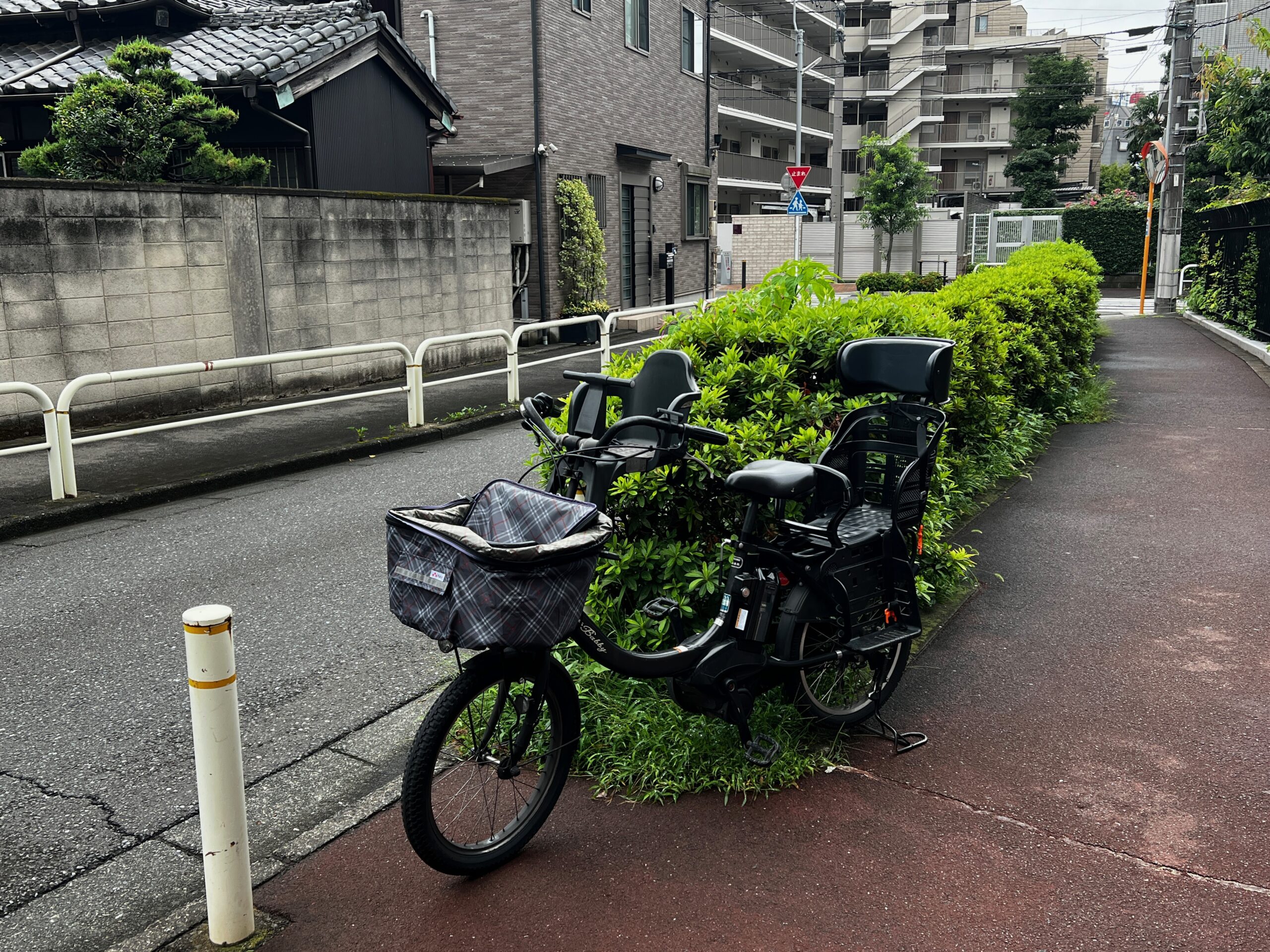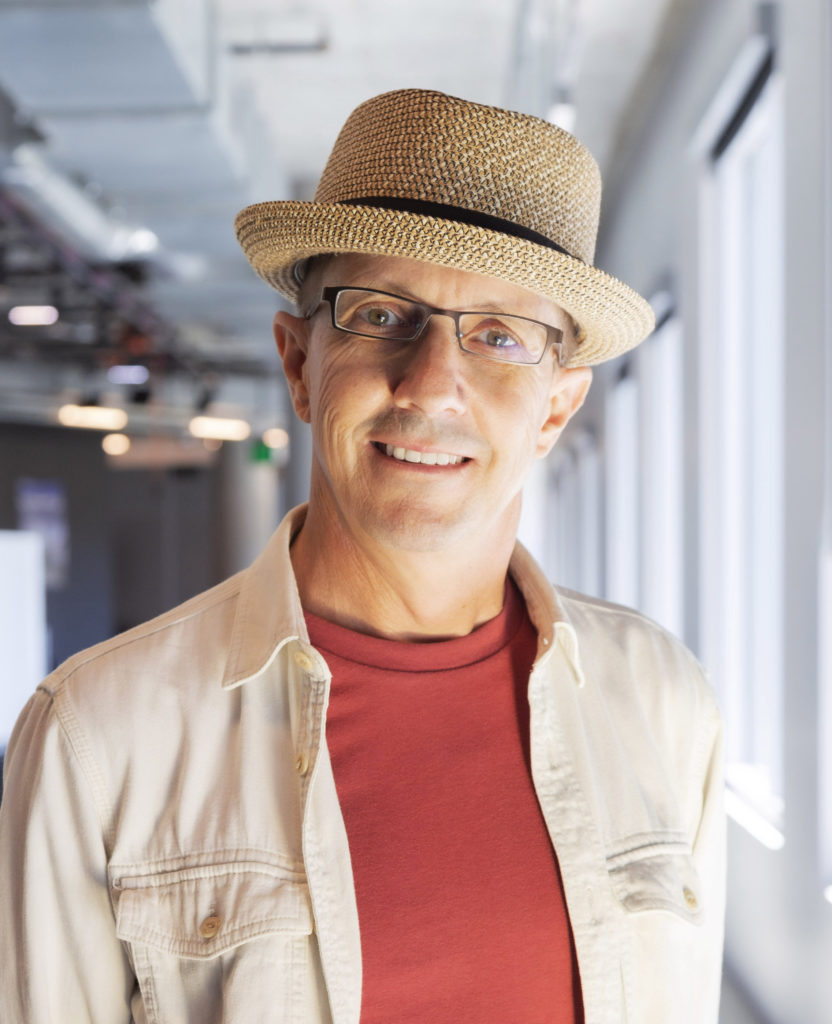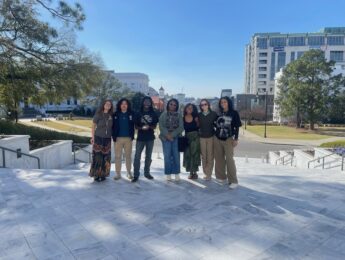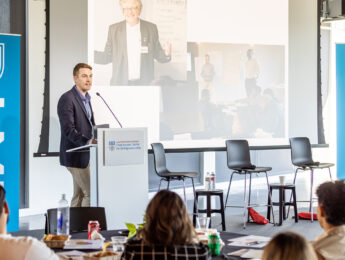
Note: The following is a personal account by Gregory Ruzzin, associate professor of production at Loyola Marymount University, who is currently on sabbatical in Tokyo, Japan.
*
Cold. Wow, is it cold. So cold I can’t feel my fingers or toes.
No, that’s not quite true. I feel them all right, sharp pain in each digit as a high stone wall flashes by on my left, darkness shattered by blinding lights ringing a dark and silent palace. I struggle to breathe, working way too hard to question how rocketing around Akasaka Palace in the cold and dark, sucking wind and struggling to keep up with the other riders, has anything to do with my research. There is no space to think about anything but being in the right gear, of holding my line as we careen around the corners, of the speed and the pain in my legs and the feeling of satisfaction at simply not being dropped…
Only afterwards, riding home alone through the dark and cold of Tokyo, do I finally have a moment to cherish the ride, to realize that I am finally back to where I have longed to be…
…and suddenly my eyes are wet..from the cold I tell myself.
*
I grew up near Detroit, Michigan, Motor City, home of the U.S. auto industry, and live in Los Angeles, two cities dominated by the car. General Motors put dinner on the table for my family and, like many kids in suburban America, I grew up riding my bike around the block and on trails in the local woods for fun. It wasn’t until high school, when my bike became a way for me to explore well beyond the 80-foot lots and rectangular blocks that constrained my youth, that I began to feel its special pull. Turn my wheels west and in 20 miles I could be out in the “country,” cows grazing, red barns, open skies. Space. Bikes were for fun, competition, and adventure. As I grew, my bike became a refuge made of aluminum and steel, a trusted friend that transported me somewhere else. Being on the bike gave me time to think, to muse, to wonder.
My musings about the role bicycles play in different cultures and might potentially play in combating climate change date back to 2013, when I taught for a semester with Loyola Marymount University’s study abroad program in Bonn, Germany. In Germany I discovered a different way of thinking about bikes and their potential impact in fighting climate change. From my apartment to school was 32 minutes by bus, 40 minutes by train, and 22 minutes by bike – along the Rhine River on a dedicated bicycle path. I was in Germany with my then 3½ year old son Zachary and I, as someone who was used to walking out the door and jumping in the car, chafed against timing my life to the bus and train. When the Akademie für Internationale Bildung provided me with a bike, I immediately got a child seat for it and rode to school every day through rain, snow, and sleet, dropping my son off at daycare on the way.
Bikes were for fun, competition and adventure. As I grew, my bike became a refuge made of aluminum and steel, a trusted friend that transported me somewhere else.
After four months of living this way – with cycling integrated into my life rather than being something added on just for fun or adventure – I returned to Los Angeles. Realizing that my commute at home was the same length as my commute in Germany and always sunny, I committed to using my bike for any trip less than 10 miles. Since 2014, I have ridden nearly 21,000 miles in Los Angeles and driven only 20,000, mostly using my car for road trips and longer excursions. Not only do I enjoy my riding; using my bike every day has turned me into a powerful environmental warrior. It has also improved my physical and mental well-being.
With transportation being one of the leading causes of greenhouse gas emissions, riding a bike is a legitimate and easily accessible way to join the fight to combat climate change. In 2021, our planet experienced some of the most extreme weather, fire, and drought effects of climate change to date, adding further proof to the dire need for global change and an accelerated response to the crisis we all face. The Intergovernmental Panel on Climate Change’s August 2021 report, Climate Change 2021, put the need for action into stark relief and identified bicycling as one solution for building a sustainable world for everyone. According to Our World in Data, using a bike instead of a car for short trips will reduce your travel emissions by 75%. The science is very clear: cycling can (help) save our planet, and if everyone climbed aboard (a bike) even just once a week we could make a significant dent in emissions.
*





In 2018, my wife, son, and I traveled to Osaka, Japan, to explore my wife’s family roots. As a lifelong cyclist and newly minted cycling advocate, I marveled at the way people got around. Trains and bikes were everywhere, and – acutely aware of how my bike commuting makes me unusual in Los Angeles – I couldn’t help but ponder why more people in America don’t see bikes as a viable form of transportation, as a way of life rather than as a pleasant diversion or something that only children do.
Back at home and on my bike, I also began to ponder how to make a film about cycling; to ponder how I might capture the poetry of cycling with a camera and sound and editing. I hoped to make a film soon, but life had other plans. In February 2019, I was diagnosed with advanced tonsillar cancer – the big scary “C”. A debilitating regimen of chemoradiation therapy followed, clouding my mind, racking my body, and ultimately stripping more than 30 pounds from my 150-pound frame. I struggled just to stand, let alone ride my bike. Sprawled on the couch that summer, I feared I might never again whiz through the night in a closely packed peloton or feel the wind on my face and the burn in my legs as I careen down a mountain road, feeling like I am flying. Those are the moments I lived for. They might never come again.
Battling back from cancer I daydreamed of…what else?…riding my bike and spending time in Japan, exploring the country by bicycle, learning about its people and culture aboard two wheels, and trying to understand how the bike had become such an integral part of how people get around in the largest metropolitan area in the world. Instead of daydreaming while on my bike I daydreamed about riding my bike and, with the help of amazing doctors from UCLA and the support of my family, friends, and colleagues, my cancer slowly drifted into the rearview mirror. It took a long time, but one day I felt well enough to throw my leg over the top tube and ride my bike…for three whole minutes. I wobbled a lot and took a two-hour nap afterwards, but I had done it.
With transportation being one of the leading causes of greenhouse emissions, riding a bike is a legitimate and easily accessible way to join the fight to combat climate change.
It was a long road from there to careening around Akasaka Palace on a cold winter night in Tokyo, and my doctors have told me again and again that because I was fit before my diagnosis, I was able to survive the disease that ravaged my body. Cycling literally saved my life. Nothing in life is ever simple though, and it has often crossed my mind that perhaps cycling not only saved my life but also put it at risk in the first place. I have ridden bikes all my life, often alongside automobiles and trucks spewing cancer-causing pollutants into the air that I am breathing. The same pollutants that now threaten the life of our planet.
Nearly two years after my diagnosis I was declared cancer free. Those are two amazing words, and I now think of my life as BC and AC. Before Cancer. After Cancer. I am endlessly grateful to have made it to AC; being told I was cancer free meant I could start daydreaming again…about riding in Japan…about seeing my son graduate from high school…about the future. In the depths of my illness, there seemed little chance I would have one, and although now cancer-free, I live with chronic reminders of both my disease and the ruthless methods we use to combat cancer – hearing loss, nerve damage in my hands, feet, and face, constant ringing in my ears. As a friend said when I was on the floor from my treatments, my doctors were trying to kill my cancer before they killed me. Yes, cancer treatment is that bad and it brings one close to death. Life is never the same after being in that place, and a ride is never just a ride. A day is never just another day.
*
With the support of the John Simon Guggenheim Foundation, Sophia University, and LMU, I am spending my sabbatical year in Tokyo with my family, riding my bike, making friends with cyclists and filmmakers, failing to learn the language (Wow, Japanese is hard!) and making short films that explore the country, its people, cycling, and climate change.
Being in Tokyo and riding almost daily, I have learned a lot about Japan, its people, and rhythms. Despite limited cycling infrastructure within many Japanese cities (i.e., a lack of dedicated cycling lanes, cycling friendly signage, or ample bike parking, etc.) cycling abounds here. Why? Simply put, cycling is a necessity and an opportunity. Japanese cities like Tokyo are very densely populated, the rail systems are incredibly robust and efficient, and distances to the places one frequents in daily life (schools, stores, the post office, etc.) are short. Many residents use their bikes for these short trips and trains for anything further than two stops (or approximately 4 kilometers) away. Many Japanese don’t own cars or even have a driver’s license. By contrast, in America, calls for increased population density are openly disparaged and getting a driver’s license is a rite of passage in many places. Without rethinking how we build our cities, the type of bicycle use seen in Japan is just not possible in America. At least not yet.
The longer I am here in Tokyo the more I believe that the real cyclists of Japan are not the enthusiasts like myself on fancy bikes who ride because we enjoy it, but rather the old people, young people, and everyone in between who simply uses a bike for utility, to do the business of life. Particularly notable are the young women on mamachari, who take their daily rides with a child on the back and sometimes the front too, grocery bags and diaper bags hanging off the sides. Their bikes are cumbersome and ungainly, and yet they ride them like pros, weaving through traffic and zooming from place to place in the sun, the rain, and the wind, living proof that life by bike is actually possible.
As much as I love them, I know that bikes alone are not the silver bullet that will save our planet. No singular technology or lifestyle change can do that. Not everyone can afford a bike. Not everyone has safe roads to ride or a short enough distance to travel. But those factors can change over time if we commit to working at it, and I believe that integrating bicycles more fully into our lives must be a significant part of solving the elaborate puzzle that is climate change.
Serendipitously, bikes can help us save not just our planet but ourselves as well. I am living proof of that. Reach out. We’ll go for a ride.
*
For more information about Gregory Ruzzin’s journey and videos, check out his musings and portfolio.
Gregory Ruzzin will be speaking about Cycling, Climate Change and Japan on April 13 at 4:30pm PST, hosted by Global Local Affairs at Loyola Marymount University.













